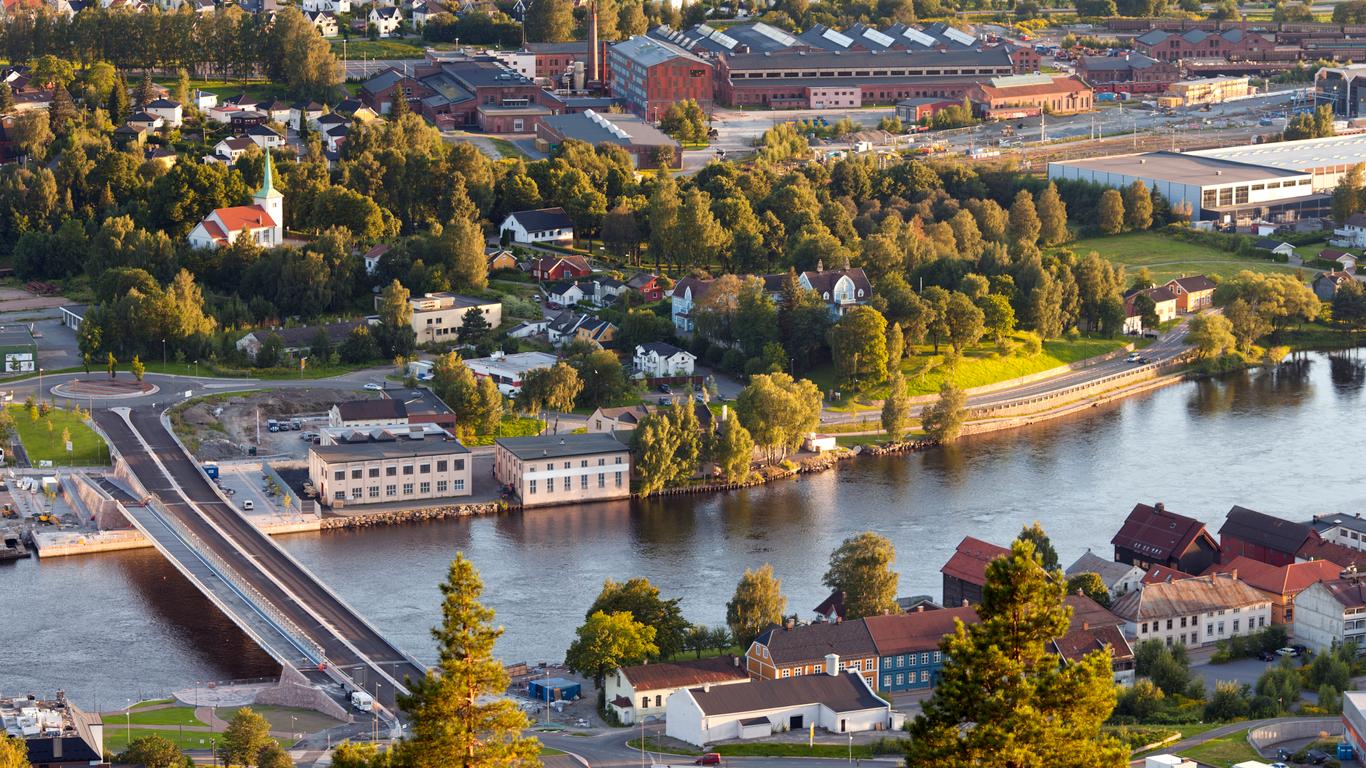The port city of Drammen lies on the edge of the Drammensfjorden in Norway’s east, divided into the northern area of Bragernes and the southern area of Strømsø by the Drammen River. While it once had a reputation as a grim industrial area with heavy commuter traffic, the highways have since been rerouted and Drammen’s streets have undergone an extensive makeover.
The city is centred around one of Europe’s biggest town squares, Bragernes Torg, lined with alfresco cafes and restaurants, as well as a small market throughout the week. Just to the west stands the Renaissance Drammen Theatre, the first of its kind to be built in the country, originally designed by architect Emil Victor Langlet in 1869. To the north, the Bragernes Church holds a commanding position, built in the late 19th century in Neo-Gothic style to replace the old Bragernes Church which was burnt down during the great fire of 1866. Visitors can uncover the city’s history at the Drammen Museum of Art and Cultural History, centred on the magnificent Marienlyst manor on the southern banks of the Drammen River. Artefacts from across Buskerud are on display, including an extensive fine art collection from Norwegian masters, traditional costumes and agricultural tools, together with historic houses from across the region that reflect the prevalent architectural styles. For the best views across Drammen, explore the corkscrew tunnel of Spiralen which was built to access the Skansen Ridge which overlooks the city and offers good hiking during the summer months, as well as cross-country skiing in winter.
Drammen is well served by rail, with most long-distance trains from Oslo travelling through the city and plenty of frequent local trains into the capital. Its city centre is relatively compact and easy to explore on foot, with pedestrian bridges spanning the river, including the famous Ypsilon Bridge, and picturesque walking routes along both banks.
Prior to 1811, Drammen existed as three small seaport towns, with Bragernes on the northern side of the river and Strømsø and Tangen on the south.Despite a proposal to merge the towns and increase cooperation as early as 1622, this was rejected by Frederick III of Denmark. During the 19th century, Drammen’s geographical position saw it emerge as a centre for shipbuilding and the timber trade, with pulp and paper factories once a major industry before their closure in the 1960s.





